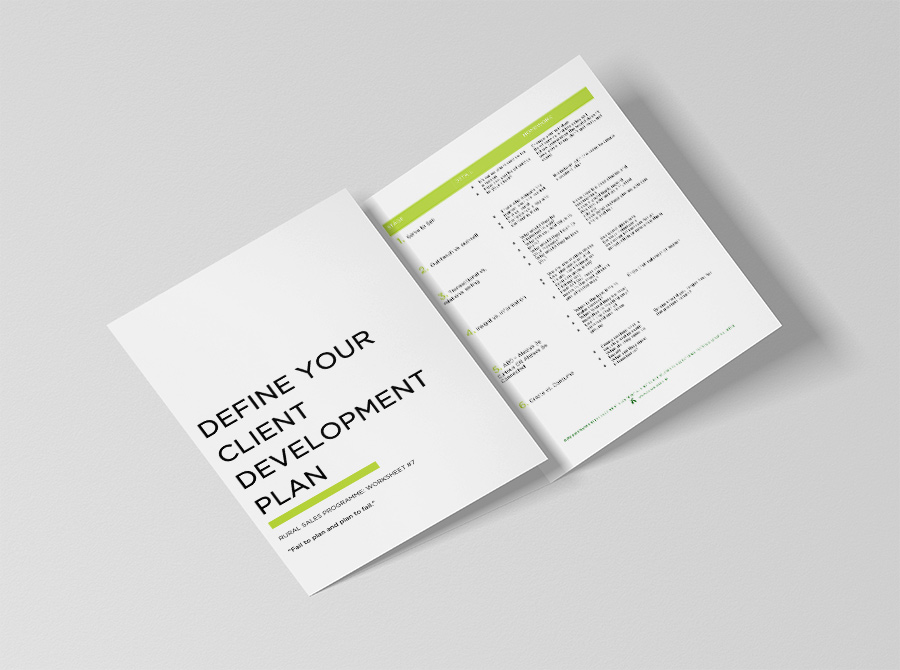Fed Up with Pushback on Pricing? Here’s How to Take Control
Price pressure is as common in agri-sales as mud on your boots. If you’re not careful, it can pulverize your margins and force you into a downward spiral of discounts that lead to destruction.
It often feels like price is the only lever you have to pull to stay competitive. But here’s the truth: you’ve got more tools at your disposal than you think.
Let’s dig into five practical solutions to pricing pressure you can apply right now to protect your margins and reclaim your value.
- Do You Have the Right Customers?
Not all customers are created equal. Some buy on price, others buy on value. Guess which ones you want more of?
The simplest way to identify your ideal customers is through what I call “The Lookalike Test.” Look at your best customers. What traits, behaviors, or attributes do they share? These are the people who value what you offer and are willing to pay for it.
Once you’ve identified them, focus your energy on serving them exceptionally well. Turn them into raving fans who will refer you to their family, friends, and networks—people who likely look just like them.
At the same time, value-segment your customers. Some are low cost to acquire and serve, while others drain your resources. Brutal reality check: some customers are costing you money.
Here’s my mentor’s advice (which I’m now passing to you): review and cull the bottom 15% of your clients every year. This frees up time, energy, and resources for your most profitable relationships.
- Master Pricing Psychology
Pricing isn’t just about numbers—it’s about perception. And the more you understand the psychology behind pricing, the better equipped you’ll be to navigate pushback.
While I can’t cover it all here, I’ve created an online course packed with strategies and insights on pricing psychology. If you’re struggling to build confidence or structure your pricing effectively, it’s a resource you won’t want to miss.
- Have You Priced for Risk?
Insurance companies charge for risk—and so should you.
Ask yourself: what risks can you reduce or eliminate for your clients? What keeps them up at night, and how can your product or service be the solution?
For example:
If a prospect previously chose a low-cost provider and got burned with subpar results, their fear isn’t just about price—it’s about repeating that mistake. Help them see that choosing based on price alone may delay the outcomes they want, wasting even more time and money.
Acknowledging and addressing these risks makes you a trusted guide, not just another vendor.
- Be the Specialist, Not the Generalist
Generalists sell to anyone and everyone, often at razor-thin margins. Specialists sell to a specific group and command premium prices.
Think about it: would you rather be a GP or a cardiologist? Specialists get paid more, have clients lining up, and are seen as authorities in their field.
So, what’s your niche? What unique expertise can you demonstrate? Build a reputation for being the go-to authority in your space, and watch how that changes the pricing conversation.
- Have You Put Your Price Up?
Here’s the hard truth: pricing objections often have more to do with the seller than the buyer. If you don’t believe in the value of your product or service, how can you expect anyone else to?
Alan Weiss, author of Million Dollar Consultant, says it best:
“The first sale is always to yourself.”
To boost your confidence, focus on measuring and documenting the impact of your work. Collect testimonials, case studies, and hard data that show how your solution delivers results. Proof builds trust, and trust builds pricing power.
And don’t forget about the price-quality association. If your price is too low, people will question the quality. (Ever wonder why someone buys a John Deere over a Massey Ferguson? It’s about perception, not just performance.)
The Bigger Picture
Here’s the psychology behind it all:
- Higher prices drive commitment. When someone pays more, they’re more invested in the outcome and more likely to advocate for their purchase.
- Price signals status. People often buy based on what it says about them to others.
As Geoffrey Miller explains in Spent, buying decisions are still deeply rooted in primal human instincts like status, significance, and the desire to be seen as successful.
Final Thought: Take Control of the Pricing Conversation
Pricing is both an art and a science. The more you practice, the better you’ll get at navigating objections and proving your worth.
If you don’t take control of the value conversation, you’ll always remain at the mercy of price-buyers. Your job is to educate your prospects on the specific value and outcomes you can deliver. Without that, you’re just another option on the shelf.
The next time you face pricing pressure, remember this: value isn’t what you say it is—it’s what your customer believes it is. Your job is to make them believe.





